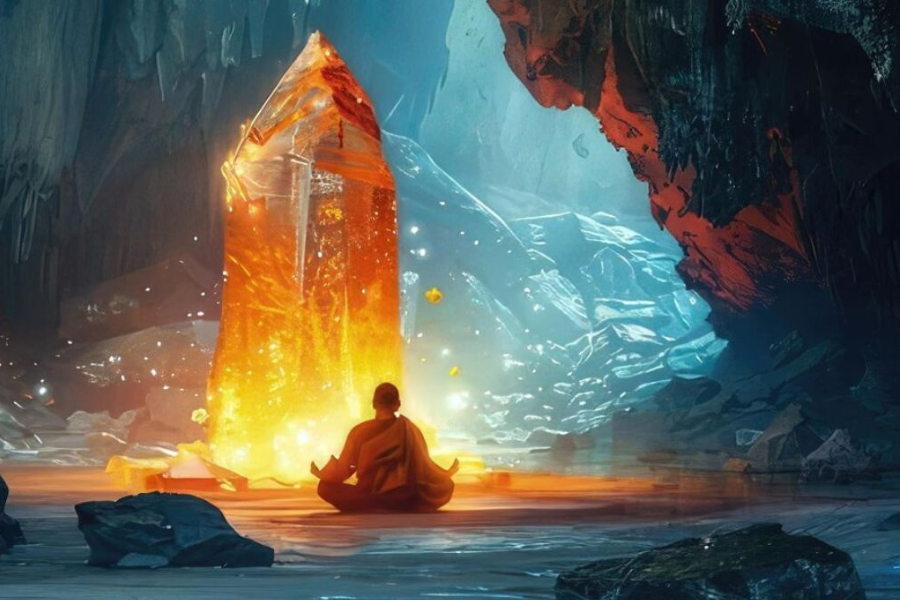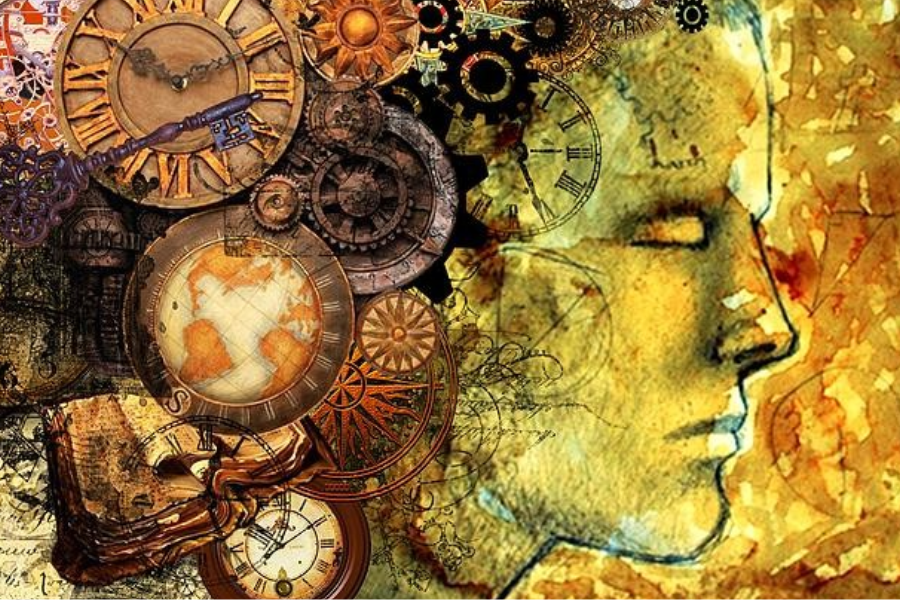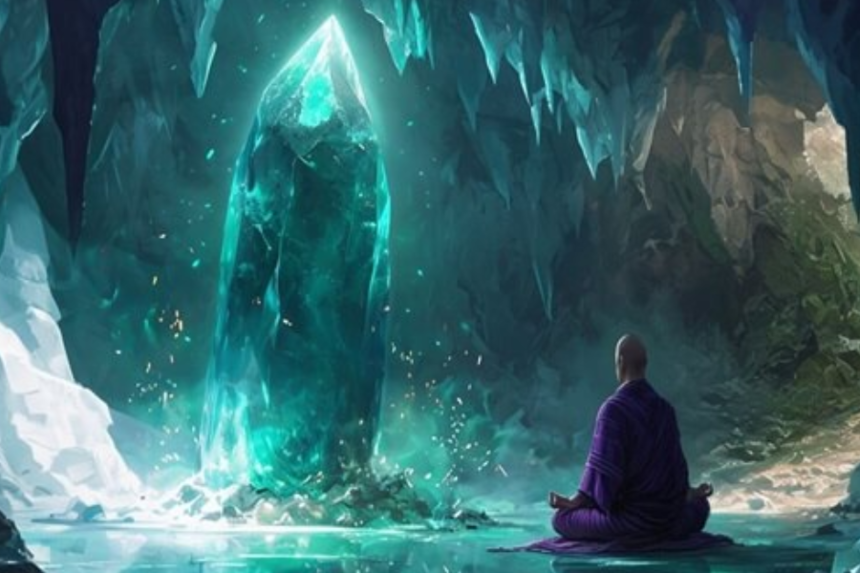Introduction
Antarvacna, a term that reverberates across diverse cultures, represents a profound journey of self-reflection and inner exploration. Originating from ancient traditions, it has evolved into a concept that transcends boundaries, influencing art, literature, music, and philosophy. While it inspires creativity, it also sparks thoughtful debates that add layers of meaning to its cultural narrative. This article delves into the essence of antarvacna, its evolution, cultural significance, controversies, and the evolving possibilities it holds in today’s world.
Defining Antarvacna: A Journey of Self-Discovery and Introspection
The Essence of Antarvacna
At its core, antarvacna is not just a form of meditation, but a profound, introspective practice designed to guide individuals on a path of self-discovery and personal growth. Unlike simple contemplation, antarvacna involves deep inner reflection aimed at understanding one’s true nature and essence. It encourages individuals to examine their thoughts, emotions, and experiences in a way that fosters enlightenment and spiritual clarity.

Historical Roots and Spiritual Significance
Rooted in a variety of spiritual and cultural traditions, antarvacna has been central to numerous ancient practices. Across civilizations, the pursuit of inner peace and self-realization through introspection has been seen as essential for spiritual development.
Cultural and Spiritual Practices Around the World
The concept of antarvacna is found in many cultures, often taking different forms but with a common goal: the deep exploration of the self. In Eastern spiritual practices, such as Hinduism and Buddhism, meditation and self-inquiry serve as key pathways to discovering the true nature of the soul. In Western traditions, introspective practices like journaling, silent retreats, and prayer have similar aims—helping individuals connect with their higher consciousness and unlock the depths of their inner world.

Exploration of Consciousness and Self-Awareness
One of the central themes of antarvacna is the exploration of consciousness—what it means to be self-aware and how to connect with the inner workings of the mind. Through self-reflection, individuals engage in an ongoing process of understanding their thoughts, motivations, fears, and desires. This practice encourages not only a deeper connection with oneself but also fosters emotional intelligence, clarity of purpose, and an enhanced understanding of one’s role in the broader context of the universe.
The Role of Introspection in Personal Transformation
Antarvacna plays a pivotal role in personal transformation. By taking the time to reflect on past experiences, actions, and motivations, individuals gain greater insight into their behavior and the patterns that govern their lives. This introspective process can lead to profound shifts in mindset, helping individuals break free from limiting beliefs and fostering greater self-compassion and emotional resilience.
A Universal Practice for Spiritual Enlightenment
The universal nature of antarvacna is what makes it a deeply resonant concept across cultures. Whether through formal meditation practices, artistic expressions, or philosophical inquiry, the journey inward—towards understanding one’s true self—is a path that transcends cultural and geographical boundaries.

Cultural Relevance and Global Impact
The notion of introspection and self-awareness that antarvacna represents has a universal appeal, resonating with people from all corners of the world. This idea has woven itself into diverse cultural practices, encouraging individuals to look inward and explore their emotional and spiritual depths. From ancient rituals to modern-day expressions, antarvacna serves as a bridge for individuals to better understand themselves and their place in the world.
Historical Roots of Antarvacna: Tracing Its Evolution Across Time
Ancient Origins and Spiritual Practices
The origins of antarvacna can be traced back to the earliest known civilizations, where the practice of introspection was regarded as a vital component of spiritual and personal growth. In these ancient cultures, self-reflection was not just an occasional activity but an essential ritual designed to help individuals achieve enlightenment and connect with the divine. These practices were often integral to sacred ceremonies, which sought to guide participants toward greater self-awareness and an understanding of the cosmos. Whether in the form of meditation, prayer, or other contemplative rituals, the ancient understanding of antarvacna emphasized the importance of looking inward to uncover the deeper truths of existence.
Roots in Eastern Traditions: Hinduism and Buddhism
In the East, particularly in Hinduism and Buddhism, the practice of introspection and self-reflection has been foundational for millennia. Ancient texts, such as the Upanishads in Hinduism and the teachings of the Buddha in Buddhism, emphasize the pursuit of inner peace and wisdom through deep contemplation and meditation.
Sacred Rituals and Ceremonies in Ancient Cultures
In ancient civilizations such as Egypt, Greece, and Mesopotamia, introspective practices were often incorporated into religious rites and ceremonies. Priests and spiritual leaders would guide followers through rituals that required deep personal reflection, often aimed at fostering a connection with the gods or achieving spiritual awakening. For example, the ancient Egyptians used meditation and reflection during their burial rites to prepare the soul for the afterlife. Similarly, Greek philosophers, such as Socrates, emphasized the importance of self-examination through dialogue and reflection as a means of gaining wisdom and understanding one’s moral purpose.
Transformation and Adaptation Across Time
As time passed, the practice of antarvacna adapted and evolved, influenced by the interaction of diverse cultures and civilizations. This adaptability allowed the concept to transcend its original contexts and find relevance in different societies throughout history. The core idea of self-reflection, however, remained constant. From the teachings of ancient philosophers to the spiritual practices of indigenous cultures around the world, the pursuit of self-knowledge and personal transformation through introspection persisted as a universal theme.
The Spread of Antarvacna: Cross-Cultural Influence
The migration of ideas and cultural exchanges between different civilizations played a significant role in the evolution of antarvacna. For example, the exchange between Greek philosophy and Eastern spiritual practices, particularly during the period of Alexander the Great’s conquests, brought the concepts of introspection and self-exploration to new regions. Similarly, during the age of exploration, colonialism, and the rise of global trade routes, ideas surrounding the practice of self-reflection traveled across continents, influencing new generations of thinkers, artists, and spiritual leaders.
Adaptations in Western Thought: From Socratic Dialogues to Modern Psychology
In Western cultures, the practice of self-reflection took on different forms over the centuries. Philosophers like Socrates and later, existentialists such as Kierkegaard and Nietzsche, emphasized introspection as a means to understand the nature of human existence, moral responsibility, and personal freedom. In the modern era, psychological theories introduced by figures like Sigmund Freud and Carl Jung further refined the process of self-exploration, providing new frameworks for understanding the unconscious mind and inner conflicts.

Modern-Day Reinterpretations and the Globalization of Antarvacna
In the contemporary world, the concept of antarvacna has become more accessible than ever, due to globalization and the widespread availability of information through technology. New interpretations of the practice have emerged in various fields, such as self-help, mindfulness, and wellness. Meditation techniques such as mindfulness and practices like journaling, which are rooted in the principles of antarvacna, are now commonly used by people around the world to promote mental health, personal development, and spiritual growth.
The Continuity of Antarvacna: A Shared Human Experience
Despite the transformations and adaptations over time, the fundamental essence of antarvacna remains the same: it is a path to greater self-awareness and understanding of the inner self. Its enduring relevance across different cultures and historical periods speaks to its universal appeal. Whether through religious, philosophical, or psychological practices, antarvacna continues to serve as a powerful tool for individuals seeking to explore their inner worlds, find meaning in their lives, and achieve a sense of inner peace.
Antarvacna in the Arts
Literary Expression: Dialogue and Reflection
This introspective technique allows readers to journey through the characters’ emotional landscapes, offering rich insights into their personal struggles and transformations.
Symbolism and Narrative Structure
Antarvacna plays a crucial role in shaping a character’s development, often revealing motivations, fears, and aspirations. Writers use symbolism and metaphors to convey the complex themes of self-reflection and discovery, deepening the narrative’s emotional impact.
Musical Interpretations: Connecting Sound with Soul
Traditional and Contemporary Soundscapes
Across cultures, both traditional and contemporary music has been used to express the themes of antarvacna. Classical symphonies, folk songs, and modern compositions all evoke a sense of deep reflection, with melodies that guide listeners toward moments of introspection and self-discovery.
The Emotional Power of Music in Antarvacna
Music is not just an art form; it is a conduit for emotional and spiritual experiences. By creating an environment conducive to reflection, music helps individuals connect with their inner selves, offering a profound avenue for personal transformation.
Visual Arts: Depicting Introspection Through Imagery
Art as a Medium for Inner Reflection
Visual arts—paintings, sculptures, and other forms—often serve as visual metaphors for antarvacna. Artists capture the essence of introspection through their use of colors, shapes, and textures, creating powerful representations of self-reflection and emotional depth.
Imagery as a Tool for Self-Discovery
In visual arts, imagery becomes a form of storytelling that communicates abstract concepts, such as the internal journey of self-awareness. Through visual symbols and evocative designs, artists invite viewers to engage in their own process of introspection.
Cultural Variations of Antarvacna
Indian Literature and Mythology
In the realm of Indian classical literature, antarvacna plays a central role in exploring the relationship between individuals and their spiritual quests. Epics and myths often depict heroes and sages who undergo profound self-reflection, seeking enlightenment through their journeys.
Western Perspectives: From Shakespeare to Modern Drama
Western literary traditions, including the works of Shakespeare and contemporary novels, often delve into the theme of antarvacna by exploring characters’ inner struggles. Soliloquies and monologues are particularly effective in presenting the internal conflicts of characters, offering audiences a direct glimpse into their thoughts and emotional states.
Other Global Cultural Expressions
African Oral Traditions
In African storytelling, the practice of introspection is interwoven into oral traditions, where narrators share wisdom and moral lessons that encourage individuals to reflect on their lives and decisions.
Latin American Folklore
Latin American mythology is rich with themes of self-reflection, often connecting the individual to the natural world. These tales offer valuable insights into the human condition and encourage personal introspection.
Controversies Surrounding Antarvacna
Ethical and Cultural Concerns
As antarvacna has entered modern media, it has raised questions about its portrayal, especially in relation to mental health. Accurate, sensitive representations are necessary to avoid trivializing or misrepresenting these important themes. Additionally, there is concern about the potential for commercial exploitation, which risks distorting its spiritual and cultural essence.
Philosophical and Religious Debates
Antarvacna also provokes deep philosophical discussions about consciousness, the soul, and the human condition. These debates contribute to a deeper understanding of the concept, shedding light on the fundamental questions about self-realization and spirituality.
The Future of Antarvacna
Modern Adaptations in Media
The practice of introspection continues to evolve with the rise of modern media. Film, television, and digital platforms provide new ways to explore and express the themes of antarvacna, making it accessible to a global audience and inviting fresh interpretations.
The Role of Technology
The intersection of technology, including artificial intelligence and virtual reality, offers exciting possibilities for immersive experiences. These tools allow individuals to engage in introspection in new, innovative ways, fostering deeper connections with their inner selves.
Preserving Cultural Integrity
It is vital to preserve the tradition of antarvacna by promoting its cultural heritage and spiritual significance. As it adapts to contemporary contexts, maintaining the integrity of the practice ensures that future generations can continue to benefit from its wisdom.
FAQs
Q: Why is antarvacna significant across cultures?
A: Antarvacna represents a universal journey of self-reflection, influencing art, music, and literature worldwide by encouraging individuals to seek deeper understanding of themselves.
Q: How is antarvacna portrayed in modern media?
A: Today, antarvacna is explored through introspective narratives, symbolic representations, and character-driven stories in literature, film, and digital media.
Q: What ethical issues are associated with antarvacna?
A: The portrayal of mental health and self-reflection in media must be handled with care to avoid perpetuating stereotypes and to preserve the authenticity of cultural practices.
Q: How is technology influencing antarvacna?
A: Innovations such as AI and VR are transforming how we engage with antarvacna, creating immersive experiences that facilitate deeper introspection and self-awareness.
Q: Why is it important to preserve antarvacna’s tradition?
A: By safeguarding the tradition of antarvacna, we honor its cultural and spiritual origins, ensuring its continued relevance and value for future generations.
Conclusion
Antarvacna is a rich, multifaceted concept that continues to captivate the human imagination across cultures. From ancient rituals to modern-day adaptations, it remains a profound source of personal insight and spiritual exploration. As we navigate the complexities of the modern world, antarvacna offers a timeless invitation to look inward, reflect on our experiences, and pursue deeper understanding.
Stay Connected: Evolve to Future
